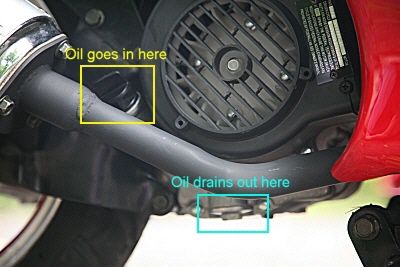Scooter Break-in
Different manufacturers recommend different break in procedures. For example in what passes for a "manual" that was supplied with my Chinese scooter it recommends the following:
- 0-150km maximum speed 30km/hr
- 151-300km maximum speed 40km/hr
- 301-800km maximum speed 50km/hr
- 801-1500km Maximum spped 60km/hr
Of course the speedometer is calibrated in mph and the oddometer reads in miles, so some translation is needed. In round numbers these instructions correspond to
- 0-100 miles max speed 20 mph
- 101-200 miles max speed 25 mph
- 201-500 miles max speed 30 mph
- 501-1000 miles max speed 40 mph
You'd have to be pretty patient to follow that to the letter and really, it's probably not necessary.
On the other hand there a school of thought which is exactly the opposite of the "slow and gentle" method. It's sometimes called the "rider it like you stole it" break-in method and you can find it described here http://www.mototuneusa.com/break_in_secrets.htm. Basically the technique involves riding the machine as hard as you possibly can from day one, with lots of speeding up, slowing down, high and low revs and wide open throttle use. Even if this method worked well, it would be difficult on a scooter with an automatic CVT transmission since you can't really control the revs very well. Personally I wouldn't try it on a scooter and I didn't on mine!

It's easy to change the oil on a scooter
What I did was use the "ride it like you'll ride it (but gently)" technique. That involves riding pretty gently for the first 25 miles (speed under 30 mph, revs under 4000 rpm), then I changing the original chinese engine and transmission oil (see the article here on changing the oil for details). The original oil might be OK or it might be "cheap and nasty". You have nor real way of telling, so change it, then you'll be sure. I replaced the original oils with Castrol GTX 10-30W in the engine and Castrol Hypoid 80/90 gear oil in the transmission. For the next 175 miles (25-200) I still took it quite easy with no rapid acceleration, keeping the speed down below 40mph or 5000 rpm, then I changed the engine oil again. An oil change on a scooter takes under 5 minutes and costs about $3. Since there is no real oil filter (the "filter" is just a mesh screen), changing the oil during the break-in period makes sense since it removes small metal particulates that the filter just won't catch.
During the break in period try to vary the engine speed as much as possible. This isn't particularly easy with a CVT scooter since they tend to try to keep the revs pretty constant and change speed by changing the gear ratio. I know my scooter seems to like to keep the engine speed around 5000rpm if it can. Still it's good to speed up and slow down and not ride at a constant throttle setting for long periods. Also avoid rapid starts and let the engine warm up for about a minute before moving off when you first start the scooter from cold to allow the oil to circulate. This is good advice even after the initial break-in period too.
It's probably not a good idea to use synthetic oil during the break in period. Good old dino (dinosaur!) oil is probably what you should use. Synthetic oil may be too slippery and not allow the parts (mainly the piston rings) to "bed in" properly. I'd stick with the manufacturer's recommendation (typically 10-30W) until after the break in period of 500-1000 miles. Then you can switch to a synthetic blend if you want to. Amsoil make a synthetic oil which they calaim is specially designed for scooters - see http://www.amsoil.com/storefront/aso.aspx
My break-in technique was to gradually increase speed over the next 300 miles (201-500) and at 500 miles do another oil change. It's cheap insurance. From 500 miles on I've ridden the scooter normally. After break-in the engine oil should be changed at least every 1000 miles as part of normal routine maintenance.
BTW, tires also need a "break-in" period. When new they may have traces of the release compound used during the moulding process on the rubber which can reduce grip. You really need at least 100 miles on a new tire before it achieves maximum grip. Be sure to check tire pressures regularly too, especially over the first few hundred miles, to make sure there are no slow leaks.
Not only the engine and transmission "break-in" over the first few hundred miles. Bolts that have not been properly tightened may work loose. Be sure to go over the engine and frame, checking bolt tightness, fuel and vacuum hose connections and electrical connection blocks.